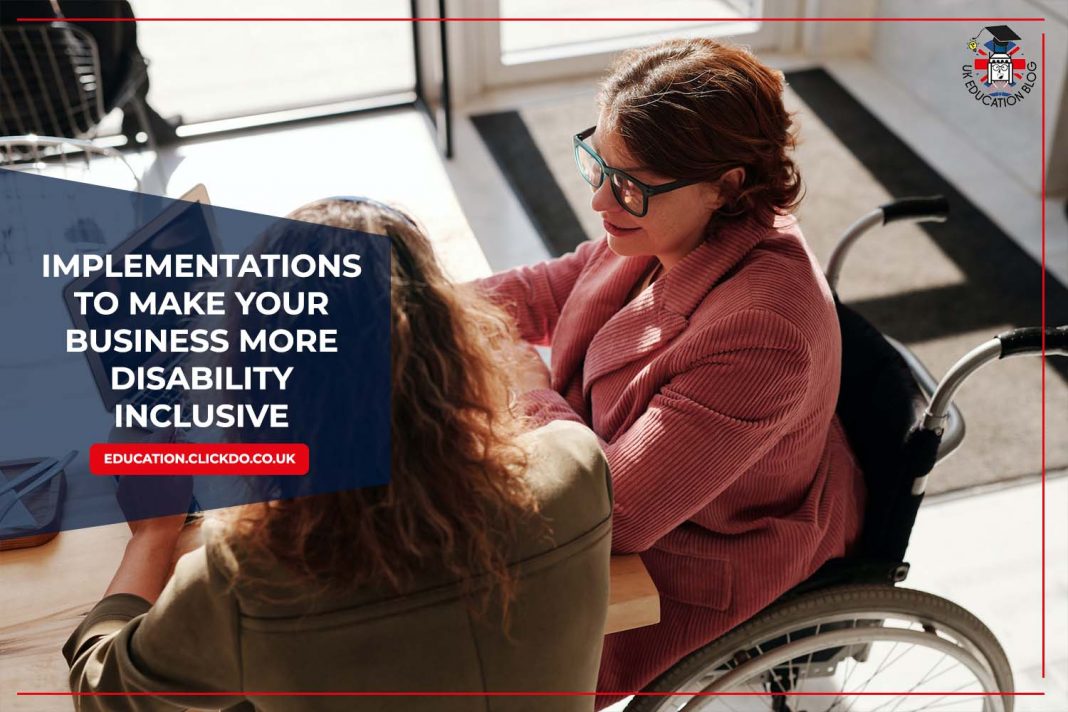An estimated 1.3 billion people, or 16% of the global population, experience a significant disability. All these people use the products and services of businesses every single day, whether it’s supermarkets, retail websites, banks, or healthcare centres.
But despite this, it is remarkable how many organisations fail to make their business suitably inclusive and accessible for people with disabilities. Accessibility is more than just a wheelchair ramp or elevator. There are countless forms of disability, many of which are invisible.
It’s important that businesses large and small, take steps to make people with disabilities feel welcome, valued, and accepted. Too often, when buildings are erected or websites created, accessibility is seen as an afterthought at best. If true systemic change is to happen, inclusivity must be at the heart of all businesses.
If you own a small business and are wondering how you can make your company more disability-inclusive, there are so many things you can do. It’s important to remember that while physical access is crucial, it is only a small part of the solution.
What is really at the heart of the matter is equal service and ensuring that those with disabilities feel respected and empowered.
Here are a few tips for different kinds of disabilities to get you started.
1. Easy Parking
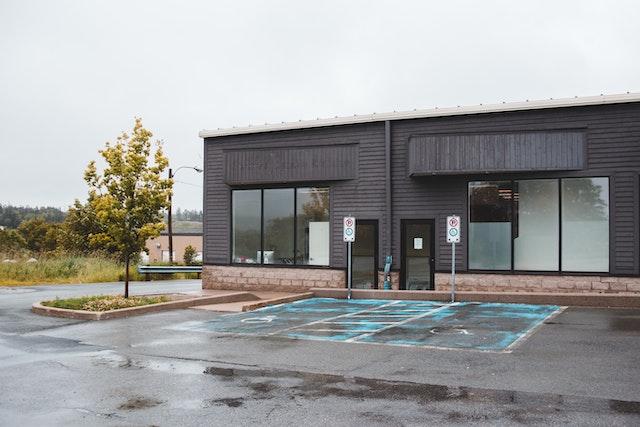 Most people without a disability don’t think about the considerations a disabled person has to make when choosing a business to fulfill their needs. Those with wheelchairs and reduced mobility will tend to opt for those with the most accessible parking spaces. This applies to everything from shops and cinemas to law firms and accountants. Parking in a busy town or city can be difficult for anyone, but for people with disabilities, it is often a dealbreaker.
Most people without a disability don’t think about the considerations a disabled person has to make when choosing a business to fulfill their needs. Those with wheelchairs and reduced mobility will tend to opt for those with the most accessible parking spaces. This applies to everything from shops and cinemas to law firms and accountants. Parking in a busy town or city can be difficult for anyone, but for people with disabilities, it is often a dealbreaker.
Don’t let your lack of accessible parking cost you, customers. When choosing an office space to rent or erect your premises, this should be a major consideration. Designated handicapped parking spaces need to be laid out and marked in a particular way, as well as being wider and as close as possible to the main customer entrance.
2. Clear Pathways
 Those with mobility impairments must be able to get around easily, both outside and inside your store or offices. Ensure all pathways are wide enough for wheelchairs, crutches, guide dogs, or human assistants.
Those with mobility impairments must be able to get around easily, both outside and inside your store or offices. Ensure all pathways are wide enough for wheelchairs, crutches, guide dogs, or human assistants.
A disabled person should be able to get from their transport to your premises with ease, but this shouldn’t stop at the front door. Interior passageways should be wide and kept clear at all times. Most people underestimate the need for hallways and corridors to be clutter-free.
It’s common in many offices to see cardboard boxes casually placed on the floor, or garish product displays set up right in the middle of a supermarket. But for a disabled person, this can be a huge inconvenience. Not to mention a dangerous hazard for someone who is vision impaired.
The layout of your office or store should be factored in, and there must be space for a wheelchair to pass through, turn around, and navigate corners with ease.
3. Good Lighting
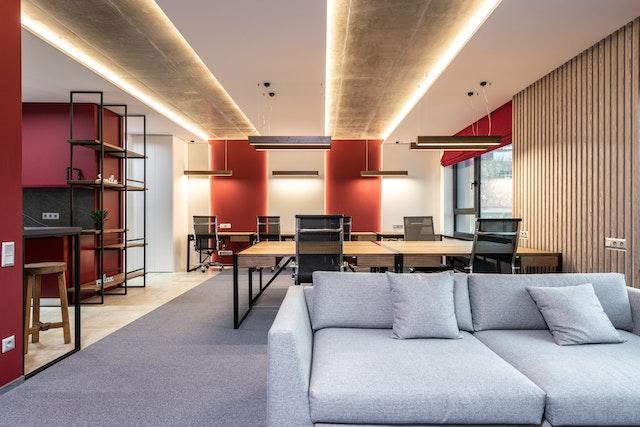 There are far too many trendy stores and restaurants that attempt to create an atmosphere by keeping the lighting as low as possible. For many consumers, this is a minor annoyance, but for people with vision impairments or reduced mobility, it can be a real danger.
There are far too many trendy stores and restaurants that attempt to create an atmosphere by keeping the lighting as low as possible. For many consumers, this is a minor annoyance, but for people with vision impairments or reduced mobility, it can be a real danger.
It’s important to make sure your store or office interiors are well-lit, so anyone can see their way around at any time of the day or night.
If possible, try to allow as much natural light into the building as possible, by leaving blinds and curtains open during the day and removing any obstacles from windows.
If necessary, supplement this with additional lighting, especially in passageways and other high-traffic areas.
4. Minimal Noise
 A lot of businesses play loud music at all times of the day, but this can be incredibly distressing for those who are hard of hearing. It makes it far more difficult for them to have a conversation or get help from a member of staff.
A lot of businesses play loud music at all times of the day, but this can be incredibly distressing for those who are hard of hearing. It makes it far more difficult for them to have a conversation or get help from a member of staff.
Although there’s nothing wrong with playing music at a low level, make sure it is not overwhelming and consider people on the spectrum of autism for example, who are hypersensitive.
5. Easy-to-Reach Products
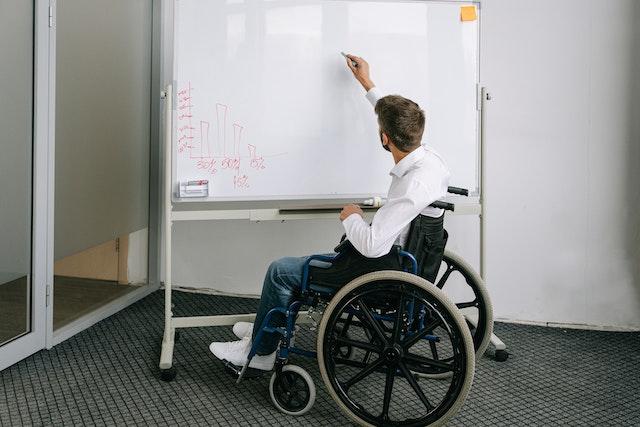 If you own a shop, you want disabled people to be able to reach the products they need without help. High shelves are a major inconvenience for those in wheelchairs, little people, and others who may have trouble seeing or reaching the products on display. Generally, anything above four feet off the ground is not going to be accessible for many people.
If you own a shop, you want disabled people to be able to reach the products they need without help. High shelves are a major inconvenience for those in wheelchairs, little people, and others who may have trouble seeing or reaching the products on display. Generally, anything above four feet off the ground is not going to be accessible for many people.
The same applies to restaurants, and it is increasingly common to see dining establishments with high tables and service counters. Most buildings are designed and built by non-disabled people, many of whom are taller than the average person and don’t factor other needs into account. This can make life difficult for shorter people and exclude wheelchair users entirely. Generally, try to keep the things you want your customers to see at a lower level.
6. Accessible Toilets
 Navigating public toilets can be difficult for disabled people, especially if they are in an unfamiliar building or location and don’t know what the facilities are like. Some disabilities mean an individual will need to use the toilet more often than most, so it’s important you have accessible bathrooms to cater to the disabled.
Navigating public toilets can be difficult for disabled people, especially if they are in an unfamiliar building or location and don’t know what the facilities are like. Some disabilities mean an individual will need to use the toilet more often than most, so it’s important you have accessible bathrooms to cater to the disabled.
Having a separate accessible toilet for the sole use of those who are disabled is ideal. If your establishment has a single toilet cubicle for disabled and non-disabled customers to share, this can lead to long wait times and cause anxiety. Someone with a disability is unlikely to patronise a business with inadequate toilet facilities.
It’s essential you ensure you have a toilet that is accessible and comfortable. Make sure you get input from disabled people in the process, so you know everything you need to include.
7. Staff Training
 Some members of your staff may not know people with disabilities or be aware of the challenges they face. Although they no doubt mean well, this may make it difficult for them to provide the service a disabled person may need. It’s possible they may display signs of ableism – whether intentional or not – that can make someone with a disability feel unwelcome and insulted.
Some members of your staff may not know people with disabilities or be aware of the challenges they face. Although they no doubt mean well, this may make it difficult for them to provide the service a disabled person may need. It’s possible they may display signs of ableism – whether intentional or not – that can make someone with a disability feel unwelcome and insulted.
As an example, a shop employee may not know how to interact with someone who has a visibility impairment and will ignore them because they don’t know what to do. On the other end of the spectrum, many people with disabilities have experienced people being overly condescending and attentive when their help is not required.
Actions like moving someone’s wheelchair without permission are an extreme invasion of one’s personal space, yet those who carry out this behaviour often don’t realise they are doing something wrong.
The solution is to ensure your staff undergoes full training in inclusivity and diversity. For those who are customer-facing, it is essential that they can meet the needs of the entire business clientele, providing an excellent service to all customers, disabled or not.
Training should ensure your employees are knowledgeable and sensitive to the requirements of disabled people while making them aware that some disabilities are not visible. The training can also focus on soft skills as they are important for any customer-facing member of staff.
8. An Accessible Website
 When thinking about accessibility, most business owners don’t consider the importance of their company website. But using the internet is a challenge for many disabled people, especially those with vision impairments, reduced motor function, or learning difficulties like dyslexia.
When thinking about accessibility, most business owners don’t consider the importance of their company website. But using the internet is a challenge for many disabled people, especially those with vision impairments, reduced motor function, or learning difficulties like dyslexia.
Making sure your website is inclusive to these individuals will only necessitate minor changes on your part but will make a world of difference to a disabled person. Things like breaking up content into digestible chunks or making the font larger will ensure it is easier to read.
Optimise and upgrade your website for keyboard navigation, as this will improve the user experience for those with motor difficulties that have trouble using a mouse. Write helpful alt text on images so those with impaired vision can understand the content and be careful with your use of colours.
Offering live chat functionality is a great way to enable many disabled people to contact your business, as they may not be able to visit you in person and it is a lot simpler than using the phone or email. Take a look at some of the best chat solutions for websites.
9. Company Culture
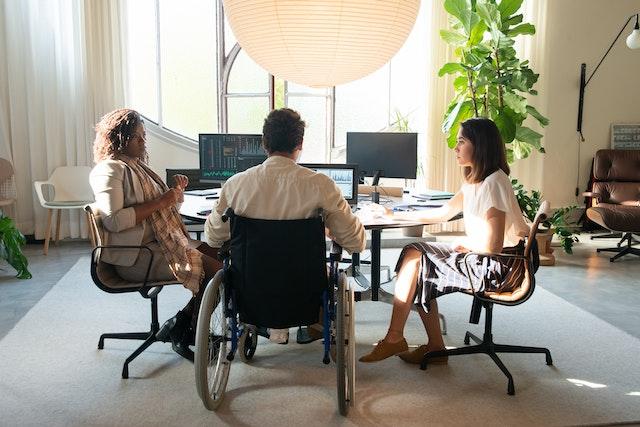 It’s not only important that your business is inclusive to its customers, but also to its employees. There’s a high chance that one or more of your staff have a disability, so as an employer, you must be sensitive to that fact. It is your responsibility as an employer to cultivate a work environment that is transparent, positive, and inclusive.
It’s not only important that your business is inclusive to its customers, but also to its employees. There’s a high chance that one or more of your staff have a disability, so as an employer, you must be sensitive to that fact. It is your responsibility as an employer to cultivate a work environment that is transparent, positive, and inclusive.
Closing Thoughts
You want to foster a workplace in which those who are disabled feel comfortable sharing their experiences and challenges. Make a conscious effort to hire people with disabilities and promote learning and change across your organisation.
Not only will you be creating a welcoming environment for those with disabilities, but you will also be helping your business by expanding your customer base.
Author Profile

- Editor in Chief
- Blogger and Educator by Passion | Senior Online Media & PR Strategist at ClickDo Ltd. | Contributor to many Education, Business & Lifestyle Blogs in the United Kingdom & Germany | Summer Course Student at the London School of Journalism and Course Instructor at the SeekaHost University.
Latest entries
 Directory PostsOctober 29, 20257 Not-To-Miss UK Education Conferences in 2026
Directory PostsOctober 29, 20257 Not-To-Miss UK Education Conferences in 2026 Directory PostsOctober 16, 2025The 12 Best Online Tutoring Platforms in the UK
Directory PostsOctober 16, 2025The 12 Best Online Tutoring Platforms in the UK Directory PostsOctober 6, 2025Top 12 London Private Schools – Best Independent Schools Nearby
Directory PostsOctober 6, 2025Top 12 London Private Schools – Best Independent Schools Nearby careerSeptember 10, 20258 Top Online Future Career Courses To Know
careerSeptember 10, 20258 Top Online Future Career Courses To Know


